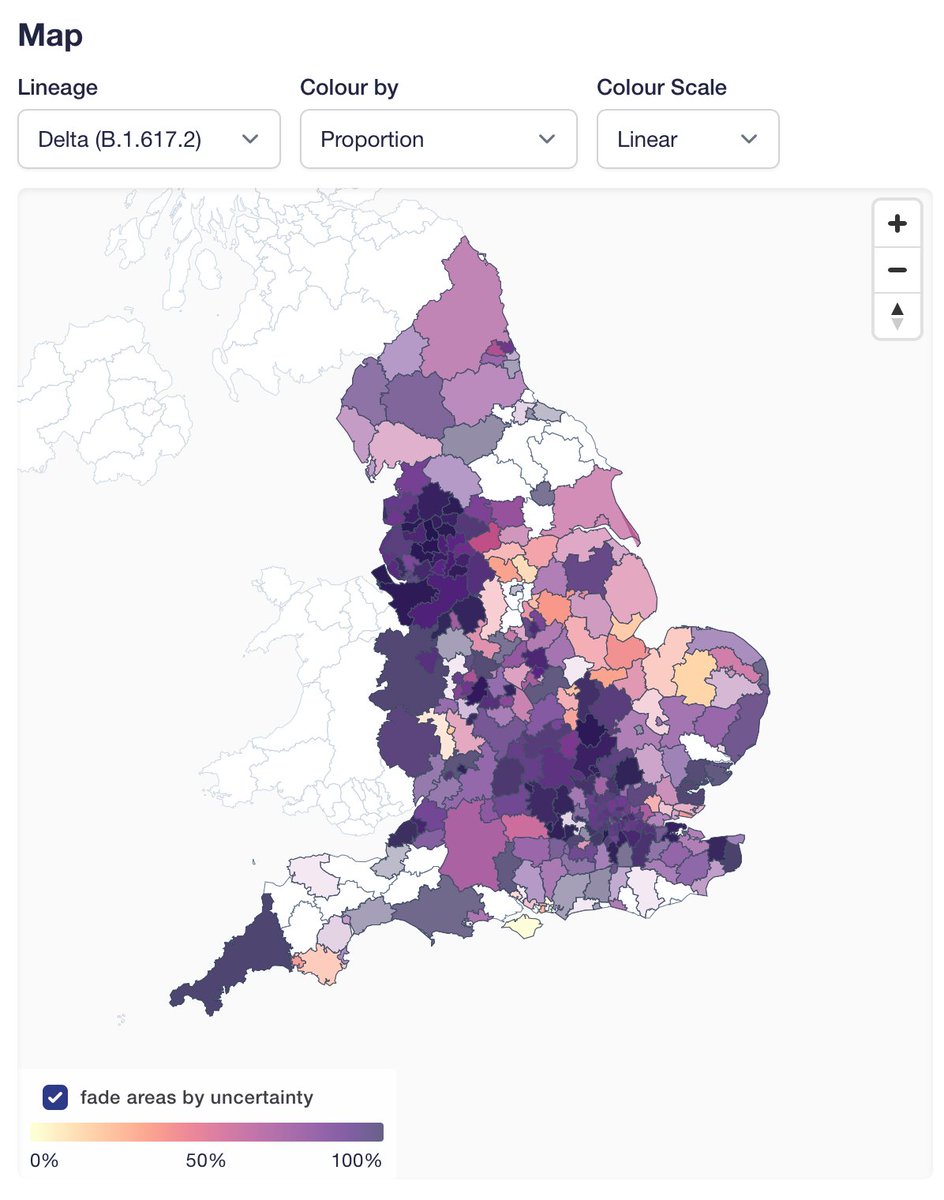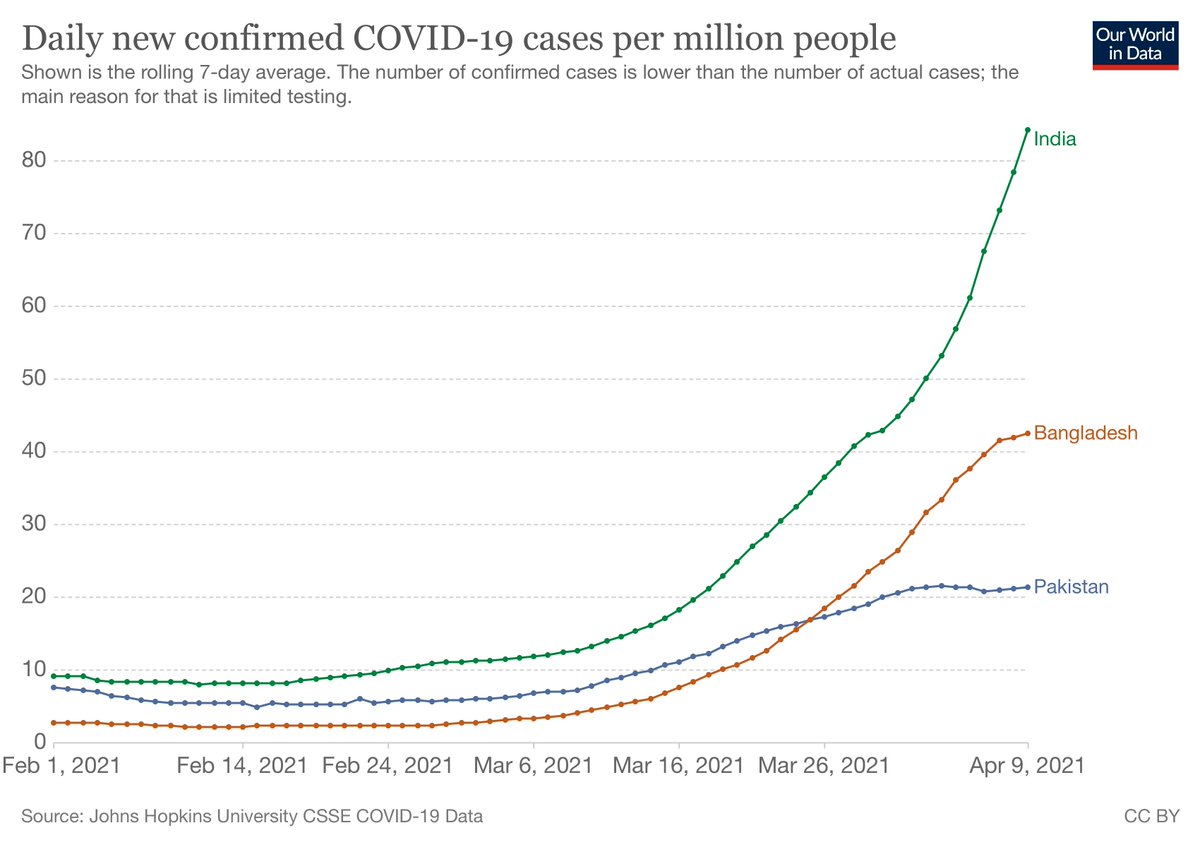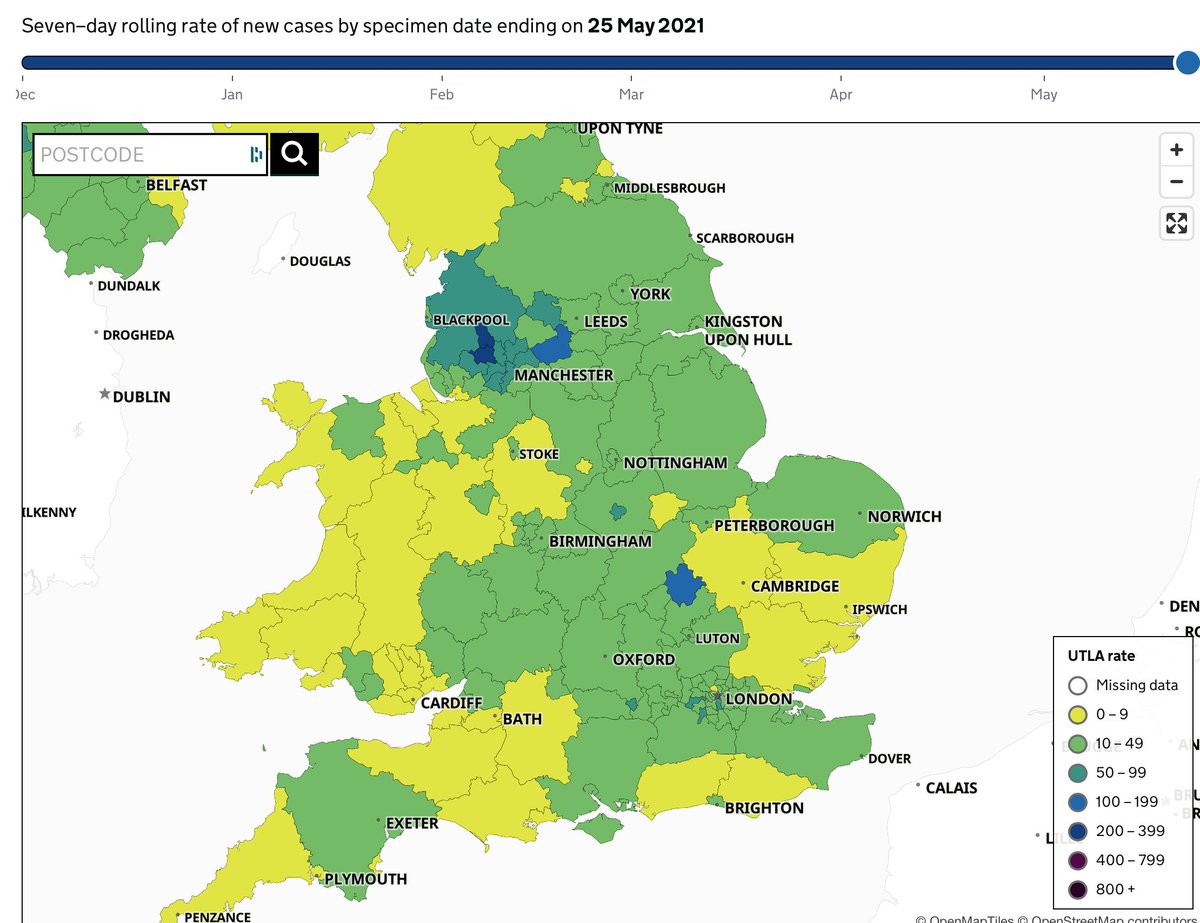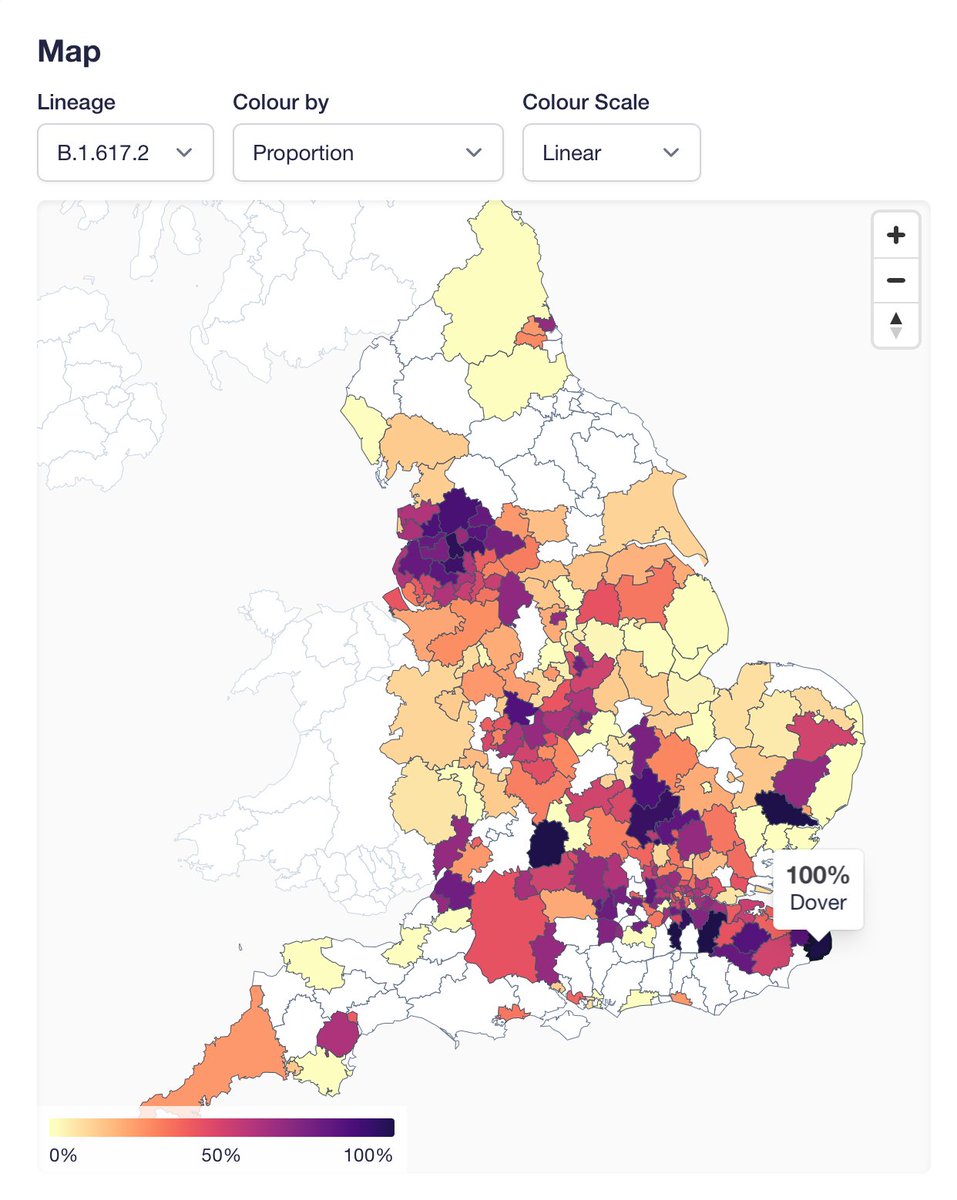
Paper on within-host diversity (credits in Gerry’s tweet) is from the first wave of the pandemic, but the conclusions are timely, as the world wonders how the virus evolved and will evolve. In particular, I think the mutation spectrum is relevant to some interesting questions 🧵
https://twitter.com/gerrythill/status/1427098948729151490
This figure shows relative mutation rate: each colour is a type of mutation like C to A, with the bars showing the context of the bases to the left and right; below the line is the reverse complement (e.g. G to T for blue).Red C>U (C>T in DNA) mutations are by far the most common 

In the very early history of the virus in humans it split into the A and B lineages, which (figure from zenodo.org/record/5075888…) differ from each other at two positions, in each case one is C and the other is T. If you just look at these two positions, lineage A is TC and B is CT 
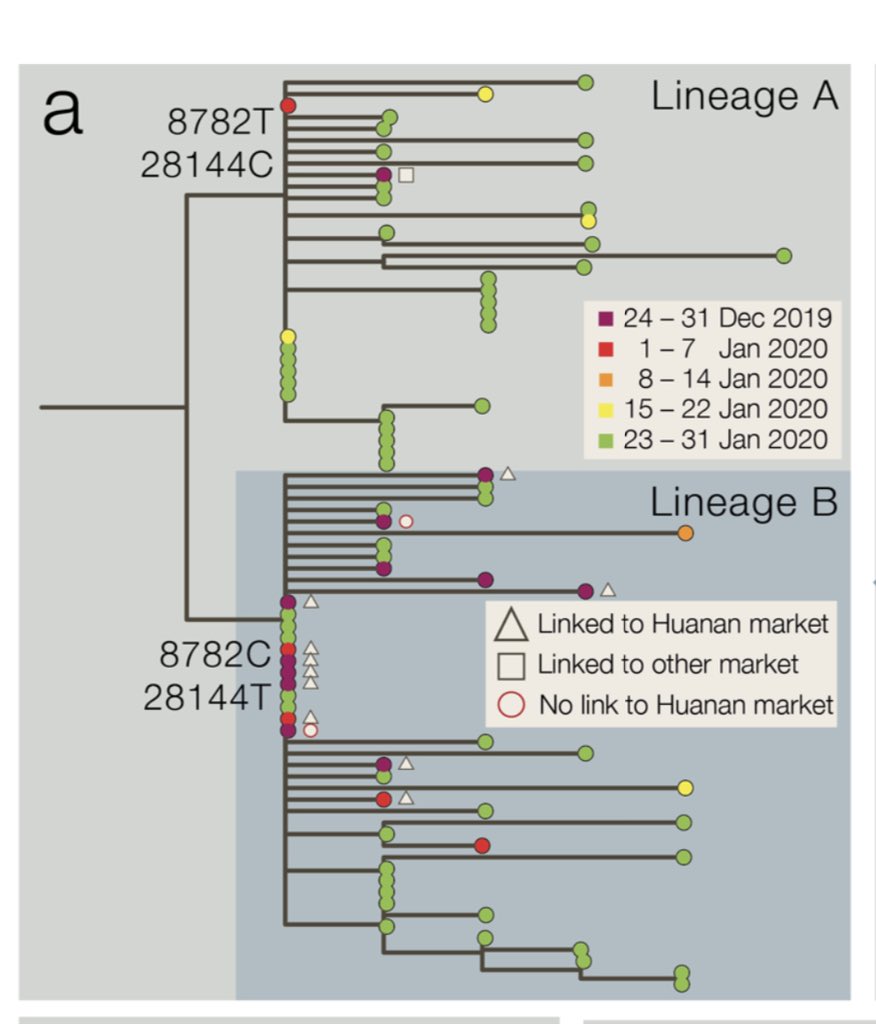
It’s possible that either A or B represent a common ancestor, and the other one therefore accrued two mutations, or that the common ancestor is unobserved, and each of these earliest lineages differ from that “parent” by one mutation (assuming no back mutation).
As the first figure showed, C to T is about six times more likely than T to C. So in the absence of other information, a scenario where the common ancestor was CC, and each got one mutation is ~3x as likely as one where one of the two observed lineages is ancestral.
This could be interesting in trying to precisely estimate the difference between the genetic time to most recent common ancestor of all observed SARS-CoV-2 sequences, and the earliest cases of human infection (e.g. as examined in science.sciencemag.org/content/372/65…).
• • •
Missing some Tweet in this thread? You can try to
force a refresh



